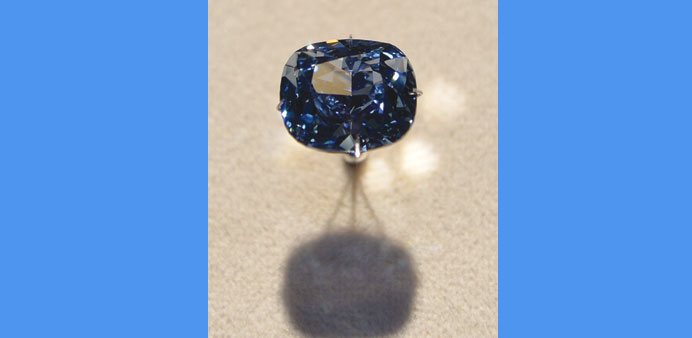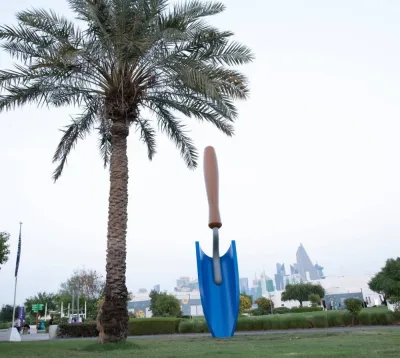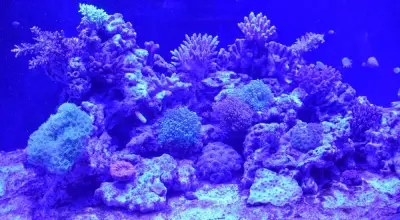The priceless 12 carat “Blue Moon Diamond” is displayed at the Natural History Museum in Los Angeles. The extremely rare ‘Fancy Vivid Blue Diamond’ was discovered in South Africa.
Reuters/Los Angeles
A rare blue flawless 12-carat diamond, one of the world’s rarest gems, was the newest attraction at the Natural History Museum in Los Angeles on Friday, adding a vibrant sparkle to the museum’s gem collection.
The “Blue Moon Diamond,” was purchased in its uncut rough form for $25.6mn by diamond manufacturer Cora International in February this year, and will be on loan in the Los Angeles museum until January 2015.
The deep blue stone has been categorised as an extremely significant find because of its unique colour, clarity and size. It is internally flawless, with no inclusions.
“You get many different vivid blues, but this blue is an absolutely phenomenal colour, the saturation is off the charts,” said Suzette Gomes, chief executive officer of Cora International. “I have never, in all my time in diamonds, seen a colour like this.”
The stone has also piqued the interest of scientists, raising geological questions of its origins. Eloise Gaillou, a mineral sciences expert at the Natural History Museum, said diamonds come from 90 miles (145km) below the Earth’s surface, thus giving some insight into what is happening in the Earth’s mantle.
“The origin of the color blue is boron, a light element that has not much to do so deep inside the earth,” Gaillou said. “Blue diamonds are rare because boron doesn’t happen very often down there, so it’s going to tell us more about the why, how, and maybe the when as well,” she added.
The Natural History Museum’s minerals collection has about 3,000 gemstones out of nearly 150,000 specimens of rocks, minerals and meteorites, many sourced from California.



